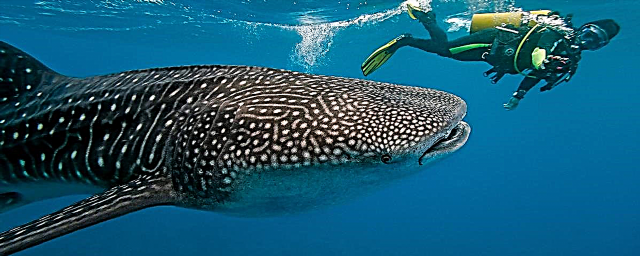
Every year, between the months of May and September, this spectacular animal arrives on the shores of the Mexican Caribbean to surprise us with its large size and original diet. Do you know him?
1. The whale shark (Rhincodon typus) is the largest fish that exists on the planet, it can measure up to 18 meters in length!
2. This species prefers warm surface water, or those areas where there are sprouts of colder nutrient-rich water, since these conditions favor the growth of the plankton from which it feeds. That is one of the reasons why there are so many individuals in Holbox waters (Quintana Roo), during the summer.
3. The spots that whale sharks present have generated various local names such as domino or lady fish, alluding to the board game. Each individual presents a unique pattern of spots that allows their individual identification, it is like their fingerprint since it does not change with growth. They may also have a “social appeal” function.
4. The whale shark is usually a solitary species, although it is sometimes seen coexisting with schools of horse mackerel, stingrays and other whale sharks.
5. The Whale has no common features with conventional whales with the sole exception of its size and the fact that it only eats tiny plankton that it collects with its mouth open. It normally feeds on or slightly below the surface, filtering small organisms (plankton) that are in the water through its gills.
6. Whale sharks are viviparous animals and their young can sometimes be seen swimming with the older ones. Although there are still no exact studies of their reproductive biology, female whale sharks have been registered pregnant with up to 300 young!
7. The whale shark is very docile and gentle, and does not panic when approached by divers or swimmers.
8. The little information that has been generated so far, assumes that the longevity of whale sharks reaches 100 years.
9. The distribution of the whale shark covers all tropical waters (except the Mediterranean Sea), that is, those waters that are found between both tropics of the globe, and that are identified by their warm temperatures.
10. According to the Official Mexican Standard NOM-059-SEMARNAT-2001, this beautiful animal is under the category of Threatened, and is currently protected by national agencies and laws that regulate the observation of whale sharks such as Conanp (for its acronym National Commission of Protected Natural Areas) and the General Wildlife Law.











